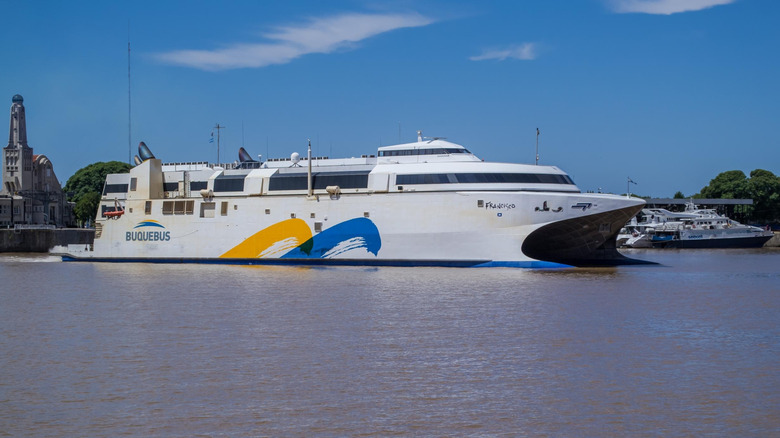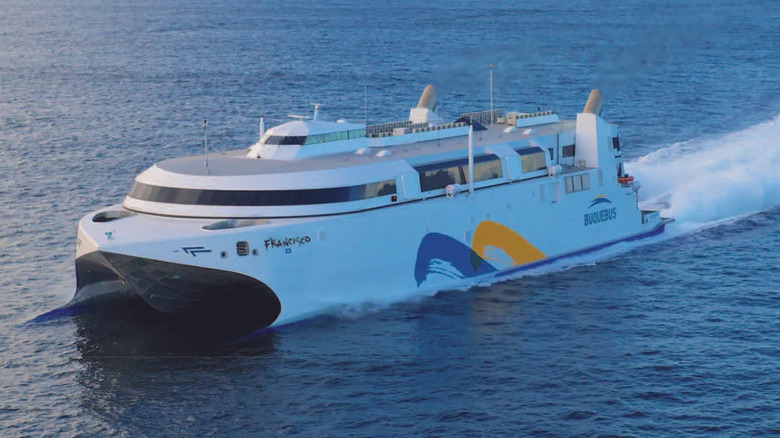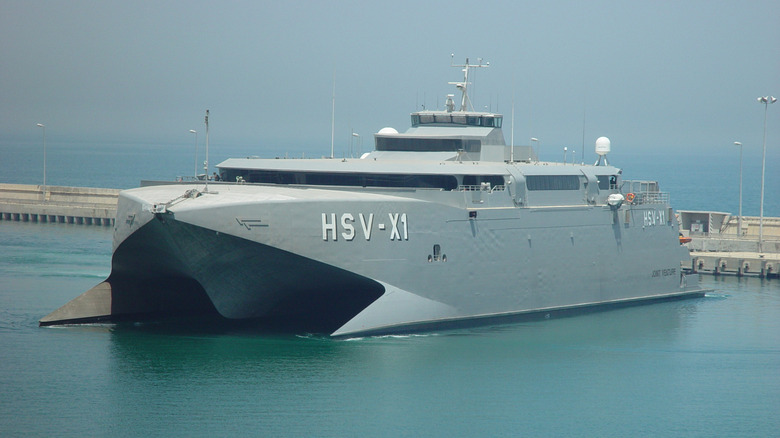What's The Fastest Ferry In The World? A Look At Its Top Speed
Ferries are typically associated with leisurely coastal cruises or routine commuter trips thanks to their dependability and practicality. But among the world's utilitarian workhorses of the sea, a handful of vessels have been engineered to break boundaries, defy expectations, and, yes, set speed records. Maritime engineering has taken huge leaps in recent decades, with incredibly large and powerful tugboats, impressive naval ships, and high-speed ferries being some of the more interesting results of these advancements.
While jets and hypercars hog the headlines for top speed records, ferries operate in an entirely different performance environment — one that combines size, stability, and safety. Still, some ambitious shipbuilders have been able to make ferries that can go as fast as smaller, lighter boats, often while carrying hundreds of people and cars across rough waters.
Introducing the HSC Francisco: the fastest ferry in the world. It's a sleek catamaran that is more like an airplane than a boat. It has claimed the title of the fastest ferry in the world, but its speed and engineering aren't just impressive — they're nearly unbelievable when measured against other maritime benchmarks.
The HSC Francisco's record breaking design
The Francisco holds the Guinness World Record for the fastest ferry in service, with a verified top speed of 58.1 knots, or roughly 66.8 mph. That kind of speed isn't just impressive for a ship — it's nearly double the cruising speed of most faster ferries. Built by Australian shipbuilder Incat and operated by Buquebus on routes across the Rio de la Plata between Argentina and Uruguay, the vessel uses a highly advanced wave-piercing catamaran hull to slice through the water with minimal resistance.
The powertrain is a big part of how well it works. The Francisco is different from other diesel ferries as it has two GE LM2500 gas turbines, the same type of engine used in cruise ships. These turbines each produce a mind-bending 59,000 horsepower and power two waterjet propulsion systems, which give the vehicle both speed and the ability to turn quickly. Another feature that sets it apart is that the engines are fueled by liquefied natural gas (LNG), making it one of the cleanest-running high-speed ferries on the water today.
Despite its focus on performance, the Francisco isn't some stripped-down racer. It's a full-service ferry, capable of carrying over 1,000 passengers and 150 cars, making its speed even more remarkable. This record-breaking catamaran is the benchmark for what high-speed passenger transport at sea can look like at a time when being sustainable and efficient are equally important.
How it stacks up against maritime competitors
The Francisco's top speed sets it apart from other ferries, but it's not the only boat capable of high speeds. For example, the HSV-X1 Joint Venture, another one of Incat's creations, was acquired by the U.S. Navy and capable of up to 50 knots in sea trials — impressive for its time, but still behind the Francisco. Similarly, the Stena Voyager, once operated by Stena Line, reached around 40 knots using gas turbines in a monohull setup before it was retired in 2011 due to high fuel costs.
Another notable contender is the Benchijigua Express, the largest trimaran ferry in the world, operated by Fred. Olsen Express in the Canary Islands. Thanks to its lightweight body and hull, it's capable of reaching speeds of up to 38 knots. Though not nearly as quick as the Francisco, it remains an impressive feat of marine engineering.
While these ferries showcase a wide range of speed-focused engineering, none of them can compete with the Francisco's incredible engineering and capability. Fast ferries will often sacrifice passenger capacity, comfort, or environmental friendliness, but the Francisco has found a way to balance all these factors while still reaching its impressive maritime top speeds.


